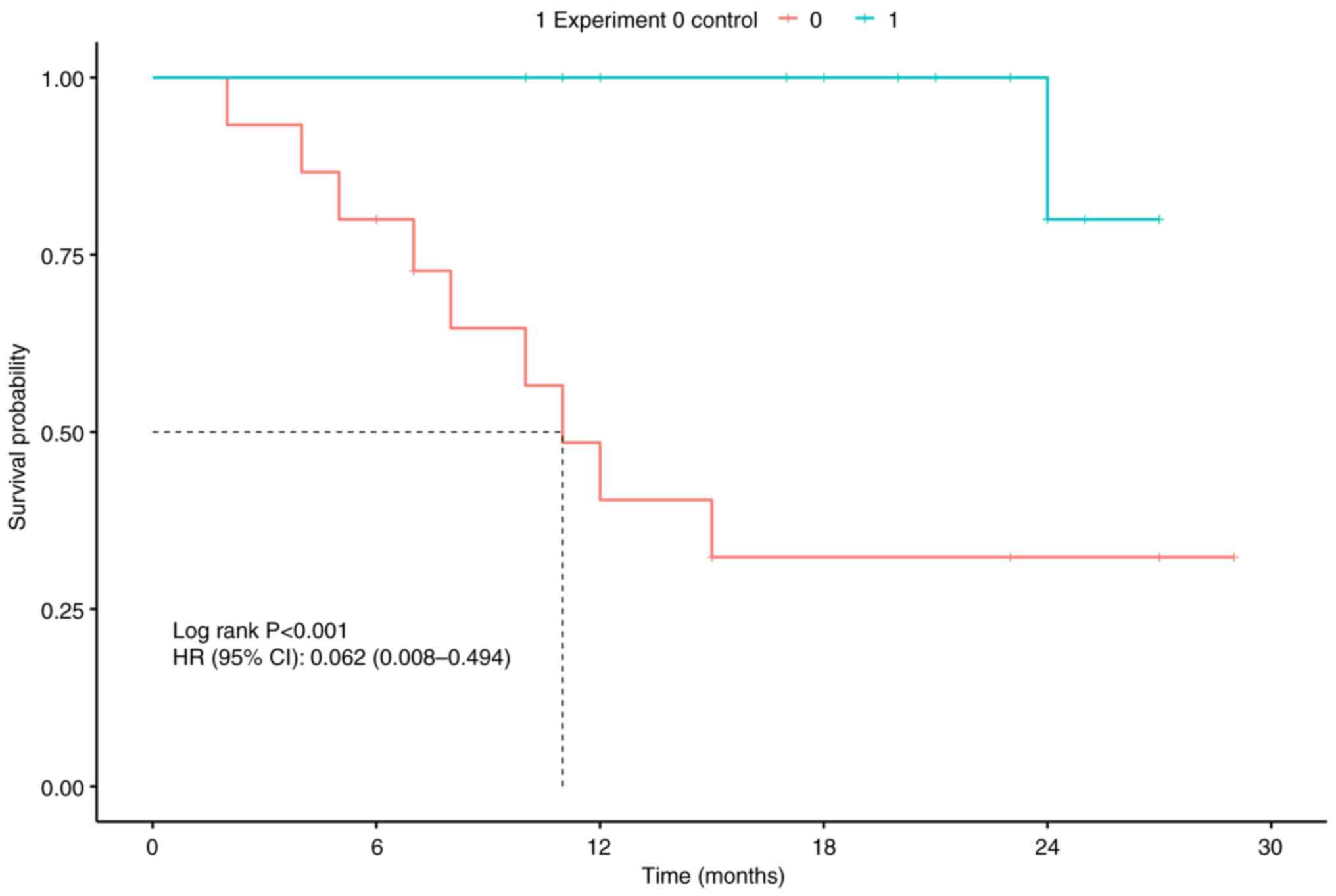Efficacy of hysteroscopic levonorgestrel‑releasing intrauterine device fixation in the treatment of adenomyosis: A cohort study
- Authors:
- Published online on: June 4, 2024 https://doi.org/10.3892/br.2024.1797
- Article Number: 109
-
Copyright: © Xu et al. This is an open access article distributed under the terms of Creative Commons Attribution License.
Metrics: Total
Views: 0 (Spandidos Publications: | PMC Statistics: )
Total PDF Downloads: 0 (Spandidos Publications: | PMC Statistics: )
Abstract
The present study aimed to investigate the efficacy of hysteroscopic levonorgestrel‑releasing intrauterine device (LNG‑IUD) fixation surgery in the treatment of adenomyosis through a cohort study. The cohort study was performed at the Affiliated Jinhua Hospital of Wenzhou Medical University (Jinhua, China). A total of 31 women with adenomyosis were initially recruited from June 2020 to June 2022 and divided into an experimental group and a control group. The experimental group underwent hysteroscopic LNG‑IUD fixation surgery and the control group underwent conventional implantation of the levonorgestrel‑releasing intrauterine system. The assessed efficacy outcomes included the time of LNG‑IUD expulsion, postoperative vaginal bleeding time, dysmenorrhea, and the menstrual blood loss score (MBLS). A total of 31 participants completed the research. The LNG‑IUD expulsion rate was 6.25 and 60% (P<0.05) in the experimental and control group, respectively. The LNG‑IUD in place time was 20.50 months (Q1, 15.75; Q3, 24.00) in the experimental group and 10.00 months (Q1, 6.50; Q3, 15.00) in the control group (P<0.05); the time of vaginal bleeding after surgery in the experimental and control groups were 12.50 days (9.25, 16.25) and 120.00 days (75.00, 120.00), respectively (P<0.05). Multiple‑factor Cox regression analysis revealed that the LNG‑IUD expulsion in patients with adenomyosis is associated with the hysteroscopic LNG‑IUD fixation surgery [hazard ratio (HR), 1954.09], uterine cavity depth (HR, 16.63), MBLS (HR, 1.14), history of gonadotropin‑releasing hormone agonist treatment in the previous 6 months (HR, 2.10), history of vaginal delivery (HR, 1.79) and history of cervical laceration (HR, 3.69). In conclusion, hysteroscopic LNG‑IUD fixation reduces the rate of LNG‑IUD expulsion, prolongs the time of LNG‑IUD in the uterine cavity, reduces the time of postoperative vaginal bleeding, relieves the symptoms of dysmenorrhea and reduces the menstrual volume in the patients with adenomyosis. The present trial was retrospectively registered in the Chinese Clinical Trial Registry on 28th December 2023 (registration no. ChiCTR2300079233).










